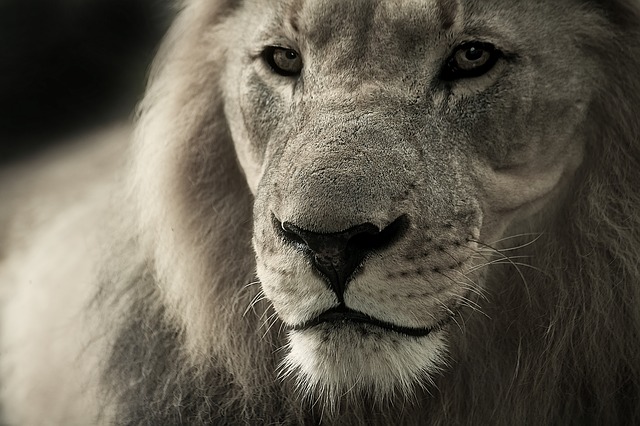The Santa Barbara Zoo plays an important role in the community through its wide range of educational programs, conservation projects, and exciting events. In addition, visitors can get a firsthand look at a number of exciting animals and learn more about the world around them. The Santa Barbara Zoo boasts an impressive array of animals from around the globe and gives community members an opportunity to discover interesting facts about them and to interact with them through programs like Backstage Pass, Keeper for a Day, and Behind-the-Scenes Tours. Below are some of the most exciting animals that people can see at the zoo:
1. The African Lion: In March 2003, the Santa Barbara Zoo opened Cats of Africa, an exhibit that currently houses four lions: Chadwick, the zoo’s only male lion, and his mate Gingerbread, as well as two young sisters name Kadi and Neema. The newest additions to the exhibit, Kadi and Neema, arrived from the Smithsonian National Zoo in Washington, D.C. in 2012 when they were 2 years old. Visitors should try to visit the lions around feeding time so that they can hear Chadwick roar when he hears the zookeepers approach with a meal. The lions eat a diet based around meat and bone to mimic their natural eating habits. Since lions in the wild can go a long time without eating, the zoo’s lions fast one day each week.
2. The Masai Giraffe: In the last four years, the Santa Barbara Zoo has witnessed the birth of five Masai giraffes. Asha, who was born in March 2015, can be seen with the rest of the herd. Visitors should look for her in the morning since she often naps during the afternoon. Asha is the daughter of Betty Lou, herself born at the San Diego Zoo in 2007. The other female, Audrey, gave birth to Buttercup last year. Buttercup also still resides at the San Diego Zoo. Michael, who arrived at the zoo in 2015, is considered the most genetically valuable Masai giraffe in North America. Many of his calves have gone to other zoos around North America to make other herds stronger. At present, only 104 Masai giraffes live in the region. They are split between 28 accredited zoos.
3. The Asian Elephant: Currently, two Asian elephants reside at the Santa Barbara Zoo. Both of the elephants arrived in 1972, at which time they were only 18 months old and already 4 feet tall. The zoo obtained the elephants after a trade with the city of Mysore, India, for two California sea lions. Their names are Little Mac and Sujatha. A male, Little Mac can be distinguished by his extra hairiness and longer tail. Sujatha, a female, tends to be much more vocal. While he enjoys the water and swims most afternoons, she will not go in past her knees.
4. The American Alligator: Mary Lou, the one American alligator in residence at the zoo, has been a part of the community since the zoo first opened its doors. While zookeepers do not know her exact age, they believe that she is at least 51. The species tends to live between 80 and 100 years. At a length of 6 feet, Mary Lou is considered a petite female since the average length is about 8 feet. Twice a week, keepers enter her enclosure to feed and train her. The keepers try to teach her to touch her nose to a target. American alligators have been protected as an endangered species since 1967, well before the Endangered Species Act of 1973. Within 20 years, the population rebounded, and more than a million alligators now live in the wild.
5. The Giant Anteater: The Santa Barbara Zoo has two primary giant anteaters, Ridley and Anara. Ridley, the male, is only slightly larger than Anara, and the pair otherwise look very much alike, which helps with camouflage. Even baby giant anteaters look like miniature versions of their parents, which helps them hide in their mothers’ fur when riding on their backs. Since 1975, 27 giant anteaters have been born at the zoo. The newest pup, which was born last year, can be seen in his enclosure near the train station at least part of each day. An insectivore, the giant anteater is fed a mash of insects that the keepers soak in hot water until it becomes gooey. The mash is designed to contain all of the minerals and vitamins necessary for good health.
6. The Chilean Flamingo: The Chilean flamingo flock at the zoo continues to grow. In 2012, 15 chicks hatched, which remains the record. However, a handful more join the flock each year. Four of the chicks born in 2012 were knocked from their nest as eggs and hatched in incubators. Two of the chicks sustained serious injury and were subsequently raised by hand by keepers, who would walk the birds through the zoo early in the morning to give them adequate exercise and encourage muscle growth. The birds remain especially attached to the humans that raised them even though they have since integrated with the flock.
